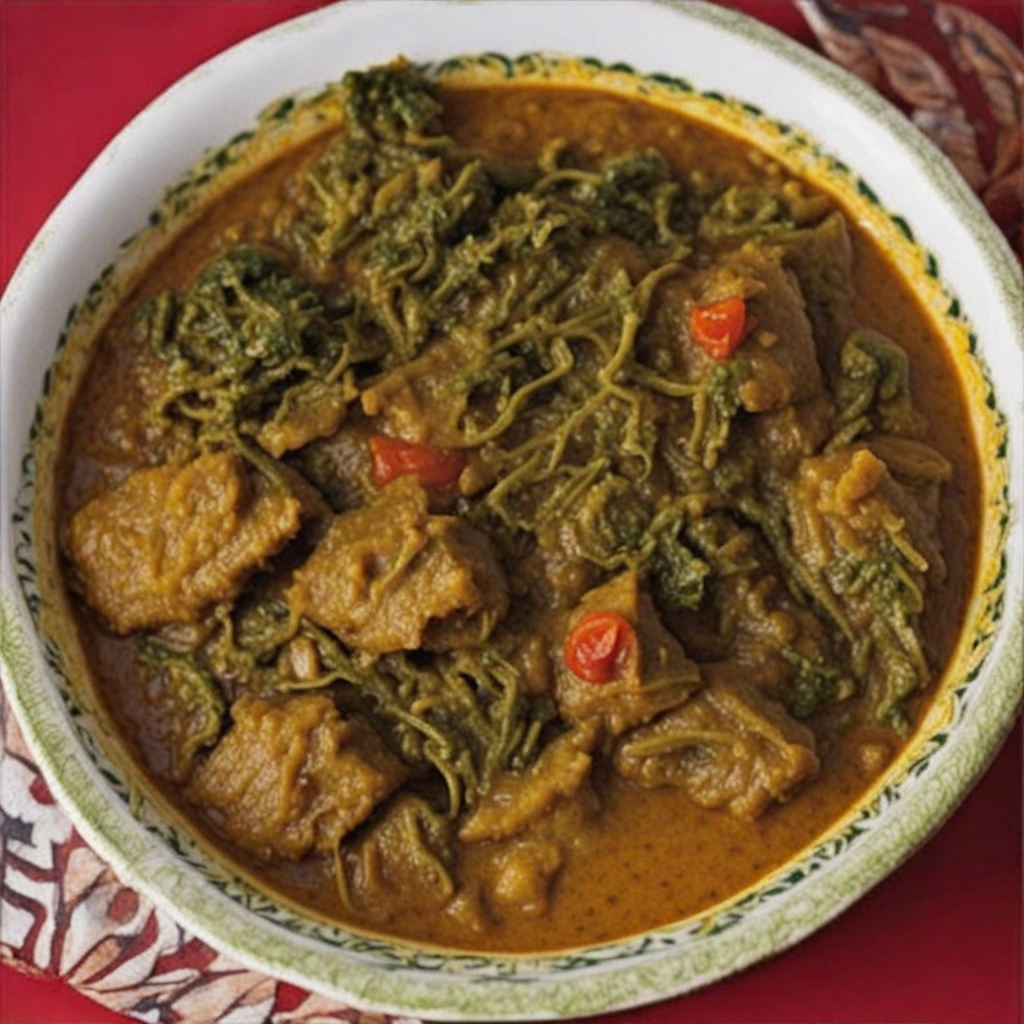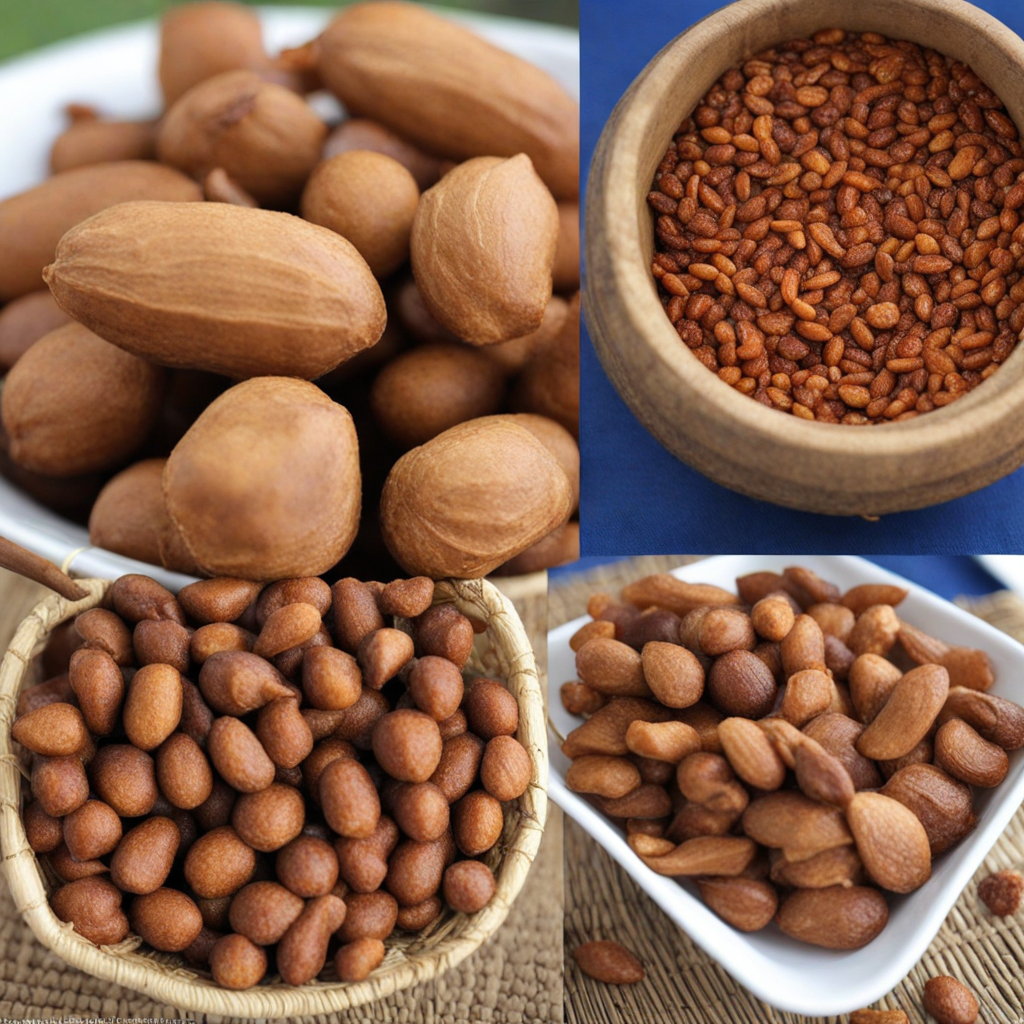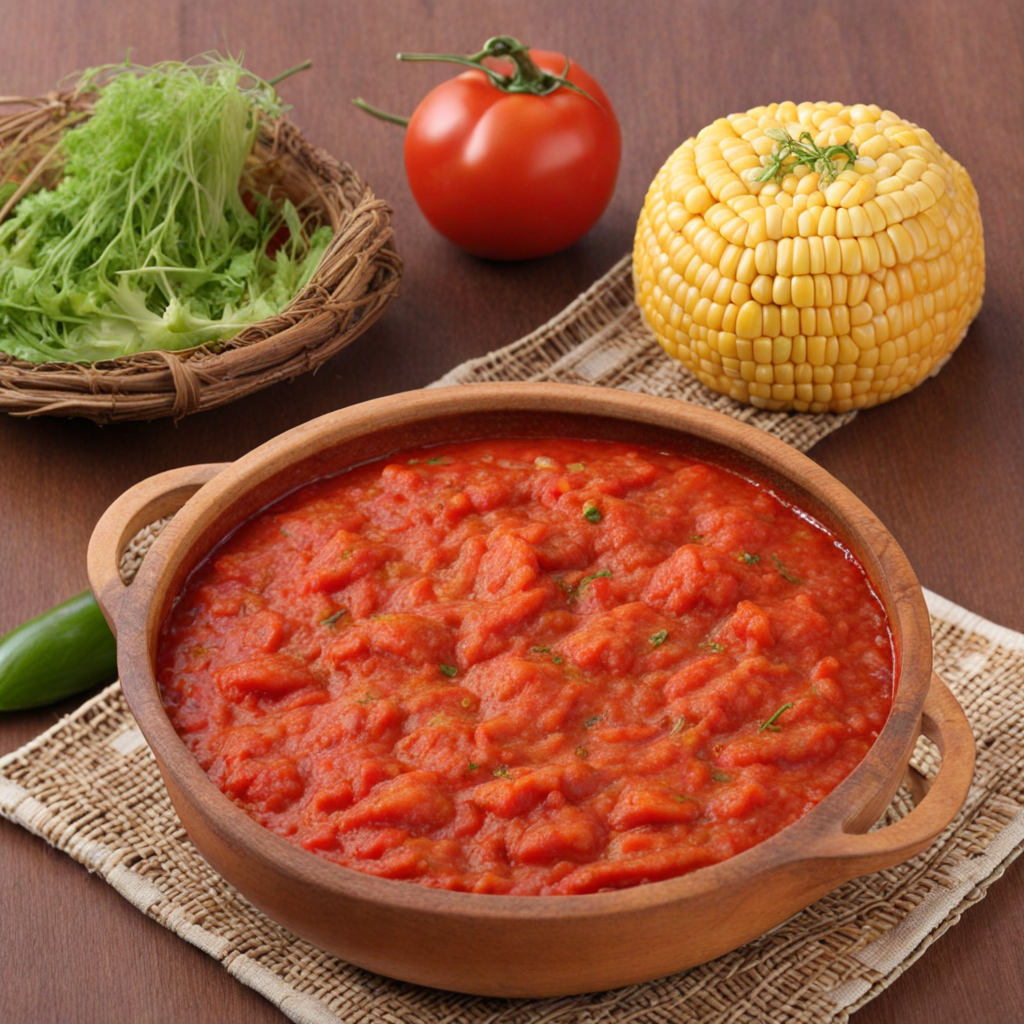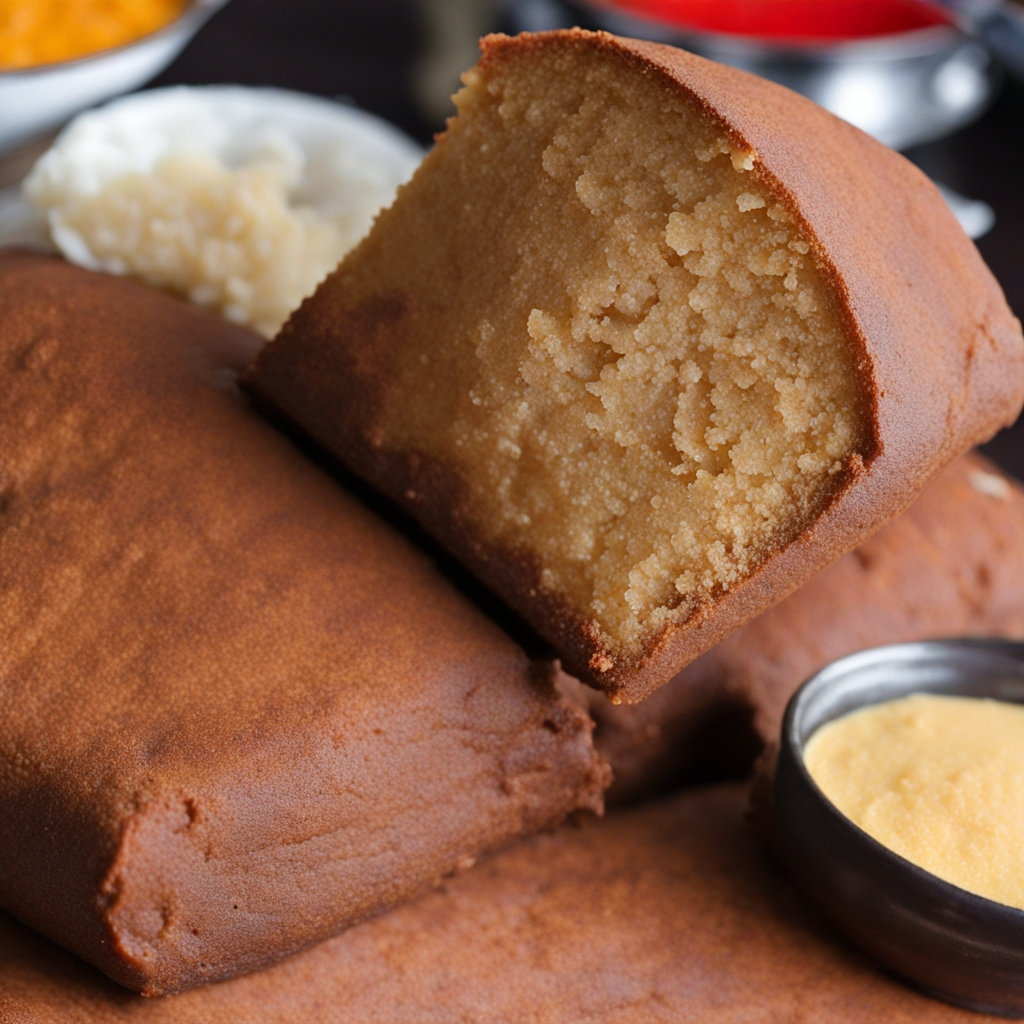Calalu
Calalu is a vibrant and aromatic dish hailing from the rich culinary traditions of Benin, where it embodies the essence of local ingredients and flavors. This dish is primarily made from leafy greens, often featuring amaranth or spinach, which are cooked down to create a tender, flavorful base. The greens are typically sautéed with onions, tomatoes, and a blend of spices, infusing the dish with a robust and savory profile. The colors of the ingredients create a visually appealing dish, with deep greens contrasting against the bright reds and yellows from the vegetables and spices, inviting you to take a bite. What sets Calalu apart is its unique incorporation of local proteins, such as fish or meat, which enhance the nutritional value and depth of flavor. The proteins are often seasoned with traditional spices and herbs, adding a delightful complexity to each mouthful. Coconut milk is sometimes added, providing a creamy texture and a hint of sweetness that balances the savory elements beautifully. The dish is often enjoyed with a side of rice or fufu, which serves to soak up the delicious juices and create a fulfilling meal. Calalu is not just a dish; it’s a cultural experience that reflects the agricultural bounty of Benin. It's a celebration of fresh, seasonal produce, and it showcases the ingenuity of local cooking methods. As you savor Calalu, you'll discover a medley of flavors and textures that come together harmoniously, offering a taste of Benin that is both nourishing and invigorating. Each bite transports you to the heart of West Africa, making it a must-try for anyone looking to expand their culinary horizons.
How It Became This Dish
The History and Significance of Calalu in Benin Calalu, a dish deeply rooted in the culinary traditions of Benin, is more than just a meal; it is a reflection of the country’s rich cultural tapestry, its history, and the intermingling of ethnic identities over centuries. The dish, primarily made from leafy greens, is emblematic of the agricultural practices, social customs, and communal living that characterize the people of Benin. #### Origins of Calalu The origins of calalu can be traced back to the indigenous agricultural practices of West Africa. The term “calalu” itself is derived from the word “callaloo,” which has roots in the Caribbean and reflects a shared culinary heritage that transcends geographic boundaries. In West Africa, particularly in Benin, calalu is often prepared using local leafy vegetables, such as amaranth leaves, jute leaves, or even spinach, depending on the region and availability. These greens are often cooked down into a thick stew or soup, seasoned with a variety of spices and sometimes combined with protein sources like fish, meat, or legumes. The cultivation of these leafy greens dates back to ancient agricultural societies in Africa, where the practice of farming was integral to community survival and cultural expression. As the transatlantic slave trade began to reshape demographics and cultural practices, the culinary traditions of West Africa spread across the ocean to the Caribbean and the Americas, leading to the creation of hybrid dishes that reflect the original recipes of the African diaspora. #### Cultural Significance In Benin, calalu is much more than a dish; it is a symbol of community and cultural identity. Traditionally, it is prepared during communal gatherings, celebrations, and rituals, serving as a means to bring people together. The act of cooking calalu is often a collaborative effort, with family members and friends participating in the preparation, epitomizing the African philosophy of communal living. Furthermore, calalu plays a significant role in various ceremonies and festivals. In many communities, it is served as an offering during religious rites or family gatherings, reinforcing social bonds and cultural continuity. The dish is often accompanied by rice or fufu, a starchy accompaniment made from cassava, yams, or plantains, which balances the nutritional profile and enhances the communal dining experience. As a versatile dish, calalu can also adapt to local ingredients and tastes, showcasing the rich biodiversity of Benin's agricultural landscape. The use of local spices and flavorings, such as palm oil and pepper, adds depth and complexity to the dish, making it a true representation of the flavors of West Africa. #### Development Over Time The evolution of calalu parallels the historical and social changes in Benin. During the pre-colonial period, the dish was primarily a sustenance food, relied upon by farmers and the rural population. Its ingredients were sourced locally, and its preparation was often dictated by seasonal availability. As trade routes expanded and colonial influences began to penetrate West Africa, new ingredients and cooking techniques were introduced, leading to a diversification of the dish. The colonial period brought significant disruption to traditional agricultural practices in Benin. The introduction of cash crops and the focus on export agriculture shifted priorities and impacted local food systems. However, despite these changes, calalu remained a staple in many households, symbolizing resilience and adaptability. The dish became a form of cultural resistance, as communities held onto their culinary heritage in the face of external pressures. In the post-colonial era, as Benin gained independence in 1960, there was a renewed interest in reclaiming and celebrating local food traditions. Culinary movements emerged that sought to highlight the importance of indigenous ingredients and traditional recipes. Calalu, with its rich history and cultural significance, found itself at the forefront of this revival. Today, calalu is not only enjoyed in homes but also featured in restaurants and food festivals throughout Benin and beyond. Chefs and home cooks alike experiment with the dish, incorporating modern culinary techniques while honoring its traditional roots. This interplay of past and present has opened up new avenues for calalu, allowing it to transcend cultural boundaries and find a place in the global culinary landscape. #### Modern Interpretations and Global Influence In contemporary settings, calalu has evolved into various interpretations that reflect the globalized food culture. Its Caribbean counterpart, callaloo, has gained popularity in diaspora communities, leading to cross-cultural adaptations that incorporate local ingredients and cooking styles. This cross-pollination of culinary traditions highlights the interconnectedness of food cultures and the way they evolve over time. Additionally, as awareness of health and nutrition grows, calalu is celebrated for its health benefits. Packed with vitamins and minerals, the leafy greens used in the dish are recognized for their nutritional value, making calalu an appealing option for health-conscious consumers. This has led to a resurgence of interest in traditional dishes like calalu, as people seek to reconnect with their heritage while embracing healthier eating practices. #### Conclusion Calalu is a dish that embodies the spirit of Benin; it is a celebration of community, resilience, and cultural heritage. Its journey from a sustenance food in ancient agricultural societies to a symbol of cultural identity and modern culinary innovation reflects the dynamic nature of food and its ability to adapt and thrive in changing circumstances. As Benin continues to navigate its path in the modern world, calalu remains a testament to the richness of its history and the enduring power of food to connect people across generations and cultures. In a world increasingly dominated by globalization, calalu serves as a reminder of the importance of preserving local culinary traditions and celebrating the diverse flavors that define our identities. Through every bowl of calalu shared among family and friends, the story of Benin's past, present, and future continues to unfold, one delicious bite at a time.
You may like
Discover local flavors from Benin







